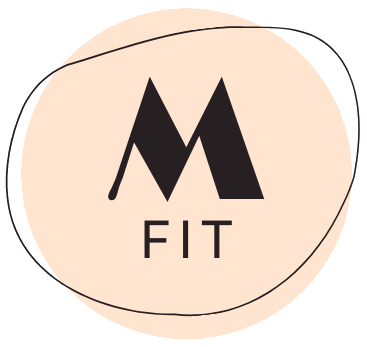Last week I wrote about exercises and stretches that help improve slouchy posture. I thought it would be good to write a broader post about why corrective exercise is important. So let’s dive into it!
First off, what is corrective exercise? Corrective exercise is used to fix muscle imbalances in the body. Muscle imbalances are seen through poor posture and incorrect form while exercising. Imbalances can be caused by activities of daily life, poor posture, repetitive movements in sports, injuries and incomplete recovery after an injury. It is important to fix dysfunctions in the body because they can lead to serious injuries and can make it difficult to productively workout.
Say you are new to working out and have just started adding squats to your workout routine. During your squats maybe your feet turn out slightly; nothing you can control – it just happens. You probably think nothing of it and keep working out anyway. In a month you notice your knee is not feeling so great. Maybe you try icing it, taking an anti-inflammatory medication, or you just push through the pain and keep working out anyway. This is what the majority of people do in these situations – but most people are approaching “minor injuries” and pain the wrong way.
Think of corrective exercise as an intervention to help solve your problem rather than simply treating it. We can continue to treat our problems with medications that ease pain, modifications to exercises that cause pain, or simply pushing through the pain. But eventually, the “patch and go” approach stops working. Here’s a visual that may help you understand a bit better – say there is a crack in the wall of your house. You could patch it up and paint over it, but eventually that crack will become bigger and start to mess with the whole foundation of your house. Your achy knee is the small crack in the wall. We want to fix it with corrective exercise before it becomes worse or causes problems throughout the rest of your body.
There are four steps to corrective exercise, and each step is equally as important as the step before it. To figure out what muscles to work on during each step, it’s good to have a full assessment to see what your posture or form looks like in certain exercises. I talked about the tight and weak muscles caused by slouchy posture last week. But a good rule of thumb when it comes to determining “overactive” and “underactive” muscles is to see what your body does during a squat. If your feet turn out – the muscles on the outside of your leg are probably overactive, as they are pulling the feet out too much. On the other hand, the muscles or the inside of the leg that create internal rotation are weak. If you have specific questions shoot me an email or set up a training appointment with me to check out your muscle imbalances.
Once you’ve figured out what muscles to work on, here are the steps we take to fix them:
Step One: Inhibit tight muscles. During this step you will use a foam roller, handheld roller, tennis ball, or some form of pressure to help release tension and knots in those tight muscles. Holding each tender spot within the muscle for a minimum of 30 seconds or until the pain lessens.
Step Two: Lengthen tight/short muscles. Here you are stretching out those same muscles that you just rolled out. Again, hold each stretch for a minimum of 30 seconds.
Step Three: Activate weak muscles. The muscles that aren’t doing their job should now be worked with isolated strengthening exercises. This should be done after step one and two are complete. It will be difficult to strengthen certain muscles if others are tight and restricting your range of motion. 10-15 reps of each exercise
Step Four: Integration. You will perform integrated dynamic movements to help get all the muscles in the body properly working together again. 10-15 reps of each exercise, going at a slow and controlled pace and focusing on form
This is a very broad explanation of corrective exercise. But I hope that it helped you realize how important it is to pay attention to those little problems. Many people don’t even stretch after a workout. That’s causing muscles to tighten and creating even more obstacles for you. As badly as you want to see fast results, sometimes at the beginning of your body transformation journey it is best to check form and take things slow to ensure that you are safe.

4 thoughts on “Importance of Corrective Exercise”